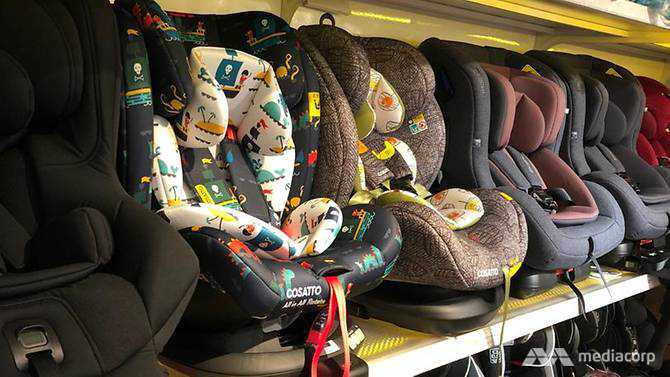Malaysian e-hailing drivers and users uncertain over Jan 1 mandatory child car seat ruling
01 January, 2020

The use of child car seat will be mandatory in Malaysia beginning Wednesday (Jan 1), but e-hailing drivers and customers are left unsure about how they should comply with the ruling.
The government has announced that child car seats would be made compulsory for all private vehicles, with drivers given a grace period of six months to comply.
Ride-hailing users, who regularly commute with children in tow, wondered if they have to prepare the car seats.
"Am I supposed to carry around a car seat every time I take my grandkids out with me?" said Mr Teoh Ad Lee.
Together with his wife, the retired civil engineer, 64, looks after his two grandchildren. He has to rely on private-hire apps as he could no longer drive due to his poor eyesight.
"You just think about it, at my age, I sometimes find it hard to carry my grandson’s bag because of my arthritis. And you want me to carry a 4kg to 5kg seat around?” he said.
Mr Teoh added that he has discussed the issue with e-hailing drivers but none of them had any clue how to proceed.
Another user, who only wanted to be known as Jessica, has doubts about the practicality of using child car seats in ride-hailing vehicles.
The entrepreneur said she took more than six months to train her son, who is now almost one-year-old, to get used to his seat.
"Adjustments would have to be made for children with different heights and sizes. Then there's also the preference of forward-facing or rear-facing.
"Do we have to squeeze our children into the seat just to comply with the ruling? It's not practical," she said.
NO PENALTY FOR SIX MONTHS
A guidebook prepared by the Malaysian Institute of Road Safety Research (MIROS) stated that all children below 135cm have to use a child restraint system.
Parents are advised to choose the right car seats according to the height and weight of their children.
A child under the weight of 13kg and height of 83cm has to use a rear-facing seat, while a forward-facing seat is more suitable for a child between 9kg and 18kg and whose height exceeds 71cm.
Subsequently, the children will need a toddler booster seat with five-point harness and then a regular booster seat that makes use of the vehicle's seatbelt system.
On Nov 19, Transport Minister Anthony Loke said the authorities would not penalise drivers who fail to comply with the new ruling in the first six months.
He told Bernama in December that the government currently has no plans to extend the mandatory use of child car seats to other vehicles such as bus and ambulance.
For now, the focus would be private vehicles only, he said.
"In the long term, we hope it can be extended to other types of vehicles, but for now and in the first phase we only made it compulsory for private cars.
“It is not easy to implement a new move ... so we want to make a success of the ruling for private cars and see its effectiveness,” he was quoted as saying.
"IT'S GOING TO BE A HASSLE": GRAB DRIVER
Private-hire vehicle owners said they were not sure if they have to comply with the ruling.
“The government better not be expecting us drivers to buy the car seats,” said a Grab driver who preferred not to be named.
“It’s not cheap and honestly, it's going to be a hassle,” he said.
Another driver, who only wanted to be known as Boon, said it would not be practical to impose the ruling on e-hailing vehicles.
“I know it is for safety, but how would we manage the bookings? We cannot be installing and removing the car seat every time and neither can we cater to families only as that would affect our earnings,” he said.
A MULA car driver, who introduced herself as Lim, said her company has not made an announcement on the ruling.
“We have raised the issue. I am a mother and I am curious how this is going to work, but they have said nothing so far. I don’t think the government has decided how they are going to do this,” she said.
CNA has reached out to the ministry and Grab for comments.
Source:
TAG(s):
